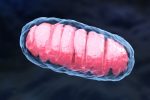Gene Editing Prevented NfL Protein Accumulation in CMT2E Motor Neurons
Written by |

The gene-editing technology CRISPR/Cas9 effectively inactivated a specific mutation in the NEFL gene that causes Charcot-Marie-Tooth disease type 2E (CMT2E), a study reports.
Correction of this mutation prevented the harmful buildup of neurofilament light chain (NfL) protein in motor neurons — specialized nerve cells that control muscle function — derived from a patient with CMT2E, with no evident adverse effects.
The study, “Allele-Specific Gene Editing Rescues Pathology in a Human Model of Charcot-Marie-Tooth Disease Type 2E,” was published in the journal Frontiers in Cell and Developmental Biology.
CMT2E is caused by mutations in the NEFL gene, which carries the code for the neurofilament light chain (NfL). Neurofilaments are neuron-specific filaments that are required for the proper function of axons, the elongated portion of the nerve cell in motor neurons that send electrical signals from the brain and spinal cord to muscle fibers. As it disrupts the structure and function of axons, CMT2 also is known as “axonal CMT.”
The N98S variant is a type of dominant mutation that occurs in CMT2E. This variation on one copy (or allele) of the NEFL gene leads to accumulation of neurofilaments in the cell bodies of neurons and causes severe nerve damage in people with the condition, as well as in mice.
Researchers in the U.S. hypothesized that inactivating the N98S mutation could be an effective therapeutic strategy for this form of CMT. To do so, they used CRISPR-Cas9 gene editing, a method scientists use to directly and specifically edit DNA.
First, the researchers generated spinal motor neurons from stem cells derived from a patient with the N98S mutation in NEFL. As expected, these cells displayed a dense buildup of neurofilaments. In fact, using a fluorescent dye to detect NF-L proteins, they observed that cell bodies of cells with the N98S mutation had a greater than two-fold increase in mean NfL fluorescence intensity when compared to control cells with no mutation.
Next, the team used the CRISPR/Cas9 system to specifically silence the N98S mutation. This widely used gene-editing tool can change a portion of the DNA sequence through a “cut-and-paste” mechanism. Guide RNA (gRNA) sequences, which are designed to match the target gene, are used by the Cas9 protein to locate and edit specific DNA sequences.
Cells with an insertion at the target site were created, named N98S-frameshift (fs) cells. A frameshift mutation causes a shift in the reading frame of the gene and in this case leads to the disrupted expression of NfL. The scientists also confirmed that their gene editing approach did not cause off-target mutations.
To assess how silencing the N98S mutation affected gene and protein expression, control, N98S (unedited), N98S-fs and cells with repair of the N98S sequence as well as insertion of a silent mutation were differentiated into motor neurons. For comparison, motor neurons with one NEFL mutation (heterozygous) and two NEFL mutations (homozygous) also were evaluated.
N98S-fs motor neurons had 52% less NEFL messenger RNA (derived from DNA and containing information to produce protein) and 42% less NfL protein levels than unedited motor neurons. In addition, motor neurons with a heterozygous NEFL mutation expressed 36% less NEFL mRNA than neurons with no mutation, indicating that the gene-editing approach was just as effective as complete removal of the coding sequence.
In the next set of experiments, the researchers sought to determine if inactivating the mutant N98S prevents the toxic buildup of NfL. They found that N98S-fs motor neurons had significantly lower NfL fluorescence intensity values than N98S motor neurons, which confirmed their hypothesis. The intensity levels of N98S-fs motor neurons also were similar to those of control cells and those with repair of the N98S sequence, “further suggesting that [NfL] localization and transport is normalized after inactivation of the N98S mutant allele,” the team wrote.
NfL is used as a biomarker of several neurological conditions, and its levels in the blood and cerebrospinal fluid indicate the extent of damage to nerve cells and fibers. The team found that N98S-fs motor neurons released significantly less NfL than all other cell lines.
“Our results validate allele-specific gene editing as a therapeutic approach for CMT2E and as a promising strategy to silence dominant mutations in any gene for which heterozygous loss-of-function is well tolerated. This highlights the potential for gene editing as a therapy for currently untreatable dominant neurologic diseases,” the investigators concluded.





